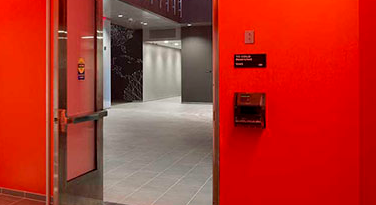AT&T Contradicts Itself in Rural High Speed Internet Expansion
Last year, AT&T supported universal high-speed internet. Now, they are concerned about their bottom line.
AT&T recently admitted that its profits would decrease if rural populations could obtain high-speed internet coverage in the age of remote work and learning.
AT&T is both concerned with its monetary allocation and how the U.S. government would distribute money.
“While the pandemic has redefined connectivity demands, those demands are not uniform, and the economics of serving every household in the country will require reliance on multiple technology solutions. Getting the definition right is critical to ensuring that broadband dollars are effectively targeted to where they are needed most,” AT&T spokesperson Joan Marsh said.
Because there is no “compelling evidence” that every household and individual business needs modern-day internet speeds, she added that the additional costs of providing universal broadband would be too significant to AT&T.
The firm surmised that the “unserved,” which tend to be in unwired rural areas, need to be identified, so resources are not allocated to places that already possess enough power. While sites in need are left dry, “leading to some areas being unnecessarily overbuilt while leaving fewer dollars to support areas in greater need, which tend to be rural,” Marsh stated. AT&T also deduced that with the advent of better internet to rural areas, they would miss out on future technological advances. “Some flexibility must be preserved […]. But wireless networks are not built to deliver symmetrical speeds, so any mandate around symmetrical performance could undermine delivery of these efficient and robust technology solutions in hard to serve areas of the country,” Marsh stated.
Zoom video attendees must have broadband with 600kbps down for high-quality video, at least 1.2 Mbps down for 720p HD video, and up to 3Mbps down for 1080p HD video. With Covid-19 enabling remote work and learning, a family of four can easily consume over 12Mbps when simultaneously using the platform. Further, perusing social media, video gaming, and watching Netflix requires larger broadband width. Thus an entire household may lack the required capability to stream content, a given in more urbanized settings.
AT&T’s recent disagreeing stance is an about-face from precisely a year ago when the company hosted an aptly titled “Universal Broadband: Essential for an Inclusive Digital Economy.” AT&T Sr. Executive Vice President, External and Legislative Affairs, Ed Gillespie, noted at the time that the government should fund the then-proposed Broadband Data Act to serve underrepresented communities in rural areas, both due to the inaccessible locations and because of low-income salaries.
He also admitted how the pandemic proliferated the idea for universal broadband. “The gaps have to be closed to ensure every American has access to high-speed broadband connectivity. In some cases, networks have not extended as far as needed into rural America. In others, people simply cannot afford their locally available broadband options. Moreover, these gaps in broadband access disproportionately affect communities of color and low-income Americans – a reality only exacerbated by the economic impact of COVID-19,” according to Gillespie’s speech recap.
However, the company may be forced to go pro-bono after all. The 1997 Universal Service Fund (USF) is a federal funding system created for the maintenance of telecommunications for U.S. residents. The U.S. expanded this system after the Communications Act of 1934, which ensured all citizens would have “access to rapid, efficient, nationwide communications with adequate facilities at reasonable charges.” The Federal Communications Commission oversees USF. However, this service became challenging to fund in recent years, raising the possibility of broadband providers’ participation in the service that AT&T is attempting to avoid. On a similar note, President Joe Biden’s $1 trillion Infrastructure Bill, which passed through the Senate and is expected to be approved by the House later this month, promises to allocate $65 billion for “reliable, affordable, high-speed internet to every household.”
For more New York City Technology news and culture, follow us on Instagram, Twitter @NYCWired, and sign up for our Newsletter below.




